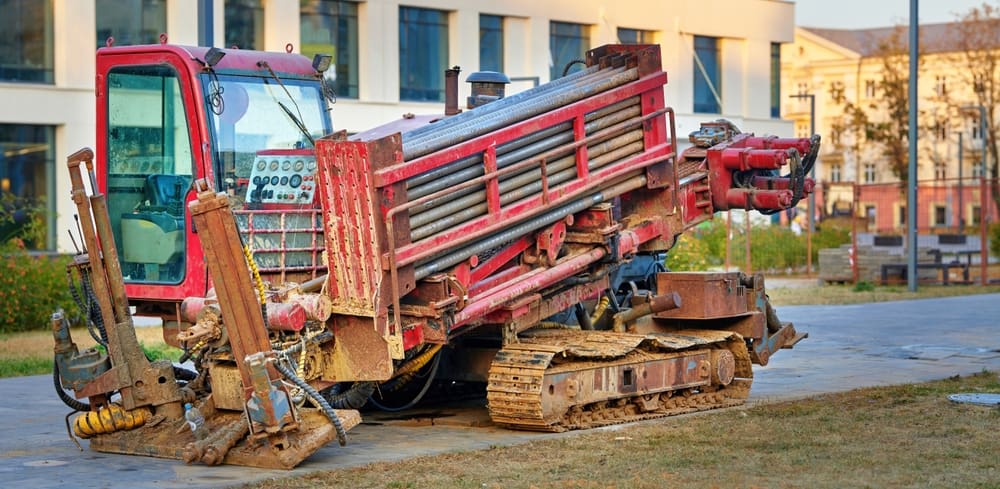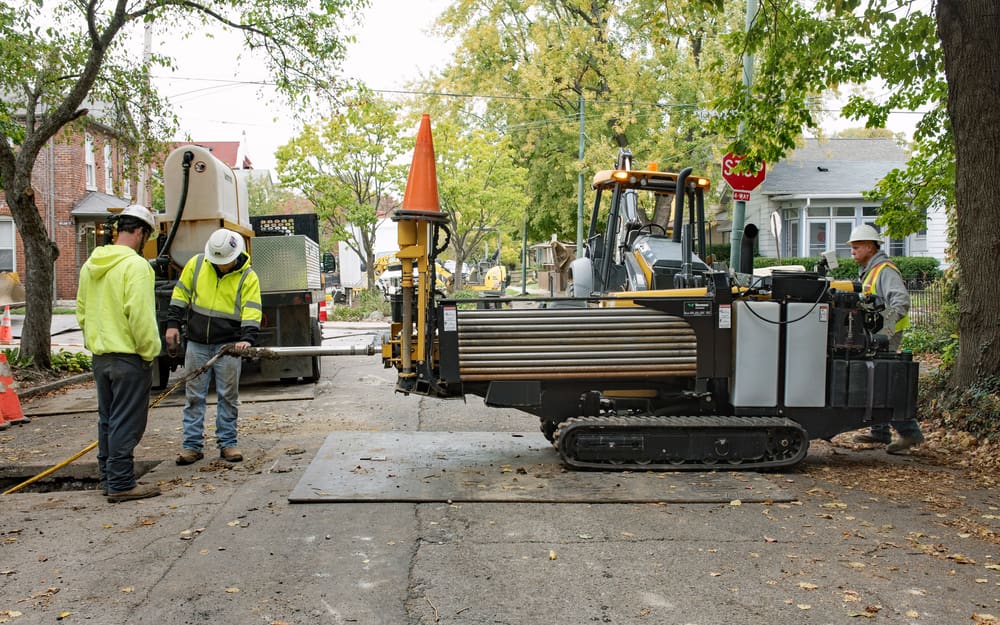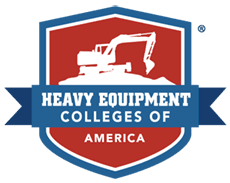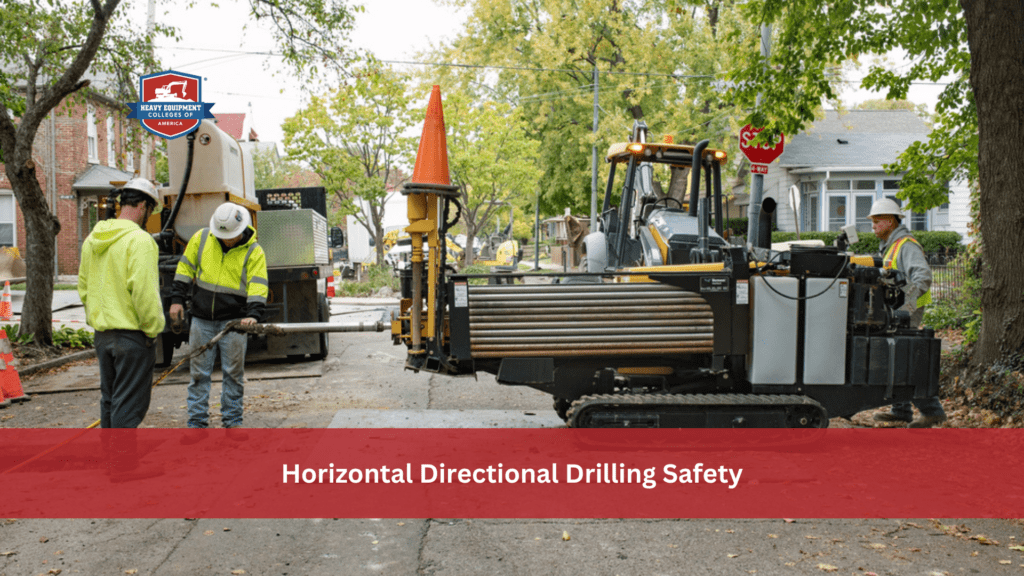Horizontal directional drilling (HDD) is a newer method of pipe installation that does not utilize the digging of trenches and therefore minimizes the damage to the surface of the soil. While this makes the service more intriguing to customers than the traditional trench method, there are factors to keep in mind for workers operating this heavy equipment to ensure their safety throughout the process. There are required certifications for workers to become an HDD operator, as well as some basic OSHA regulations that everyone involved needs to adhere to.
The topics that we will cover in this post include:
- What is HDD? And what are the benefits of it?
- What are the hazards in directional drilling?
- Horizontal directional drilling safety checklist
- Safety measures in horizontal directional drilling
- Become a certified HDD Operator
Table of Contents
What Is HDD? And What Are the Benefits of It?
Horizontal directional drilling, also known as HDD, refers to a method of replacing sewer pipes in which no trenches are dug and the original pipe remains in the ground. Instead of digging up the original pipe and leaving trenches, two smaller entry holes are dug at either end of the pipe that needs to be replaced, a few feet below the original pipe. From there, a horizontal drill is used to drill a hole underground, and a new pipe is threaded into the new tunnel. After that, the new pipe is connected to the main line, and the original pipe is disconnected and left in the ground.
Now that you know the basics of what HDD is, we will go over the benefits of using HDD over the traditional trenching methods of repairing underground pipes. Firstly, this less invasive technique makes it ideal for dense residential areas or congested commercial areas. Minimal digging means that it is easier to make repairs without disrupting or damaging already existing utilities or traffic in the area. In addition, because the new pipe is installed deeper in the ground than the original pipe, it can lead to better protection of the pipe from any future construction or natural elements.

What Are the Hazards in Directional Drilling?
As with any form of construction work, there are risks involved that both workers and management need to be aware of when working these jobs. There are hazards for workers involved in HDD itself, underground, on the surface, and even overhead.
Directional Drilling Hazards
Directional drilling comes with its own unique set of hazards and risks that need to be taken into account by all parties involved in the process. Remaining aware of these hazards makes sure that safety measures are taken to protect workers as well as the people navigating around them. Some of these hazards can include:
- Operation of the drill
- Traffic control
- Noise
- Workplace safety and the isolation of hazards
- Fall protection
- Confined-space entry
- Hand tools
- Power tools
- Verification of underground utilities
Underground Drilling Hazards
When drilling underground, it is important to be aware of any underground utilities that may be in the surrounding area. Verifying what is already underground protects not only the utilities themselves from damage but also the workers on the scene. Some hazards to take into account include:
- Any electrical power cables or boxes that can lead to severe injury or electrocution
- Any fluid or gas pipes that can carry toxic or flammable solutions
- Any sewage and/or stormwater lines
Overcoming Challenges in Horizontal Directional Drilling (HDD)
Prior planning is essential for a successful HDD project. Read this post to learn how to overcome challenges in Horizontal Directional Drilling.
Surface Hazards
Before you begin drilling, it is important to assess the surrounding area for any potential hazards that could cause harm. Some hazards on the surface can include:
- Transformer boxes
- Above-ground wiring
- Water and gas shutoffs
- Ditch line depressions or signs of previous excavations
- Pipeline markers
- Outdoor decor such as gas barbeque grills or outdoor lights
Overhead
When operating heavy equipment, keep your eyes up for any overhead hazards that could potentially get tangled in the equipment. These hazards can include:
- Any electrical wiring, which should always be treated as live to prevent serious injury or electrocution
Horizontal Drilling Safety Checklist
Horizontal directional drilling is a complex process that needs to have safety measures in place for each step of the process. There should be a set of HDD safety checklists in place before the drilling begins, during the drilling, and once the drilling is complete.
1. Before Drilling
- Check surroundings for any potential hazards
- Double-check any maps of underground utilities on the work site
- Make sure that the work site is properly blocked off and civilians are aware of the drilling project in advance
- Inspect heavy machinery before use to check for any issues

2. While Drilling
- Make sure that all workers are equipped with proper PPE and that no one enters the work site without PPE
- Keep the work site clear of civilians and that only certified individuals are working on or near the heavy machinery
- Routinely double-check for any unmarked or missed underground utilities
3. After Drilling
- Proper cleanup of any equipment or debris caused by drilling
- Inspection of new pipe to ensure it is installed properly and there are no leaks
- Double-check that all utilities are accounted for and undamaged
Safety Measures in Horizontal Directional Drilling
Alongside the safety checklist, it is also important to have basic safety measures in place for any potential issues that may arise, including:
- Training and qualifications: only certified individuals should be operating heavy equipment and have gone through formal training beforehand.
- Set up and notifying: the work site should be properly set up and locals notified in advance before work commences.
- Personal Protective Equipment (PPE): everyone on the work site needs to be equipped with the proper personal protective equipment, including hard hats and reflective vests.
- Safety procedures and checks: safety checks should be conducted on all heavy equipment before anyone operates it.
- Underground utility locations: all underground utilities need to be accurately mapped out and accounted for before work begins.
- Environmental and community impacts: there need to be contingency plans in place to protect the surrounding area including nearby waterways or residential houses.
- Emergency procedures: there need to be plans in place in the event of any emergency, including personal injury or damage to surrounding utilities.
- Communication and documentation: thorough communication between workers and management, as well as in-depth documentation of procedures, protects not only workers but also the company in the event something happens.
Become a Certified Heavy Equipment Operator
Looking to become a certified heavy equipment operator? At Heavy Equipment College (HEC), we offer various heavy equipment training programs in the United States for students looking to get into a heavy equipment school. Our Heavy Equipment Colleges of America are located in Georgia, Oklahoma, California, and Washington state.
If you wish to enroll at Heavy Equipment College, click here to begin the application process. Our team of representatives is here to help you build a successful career in the heavy equipment industry.

